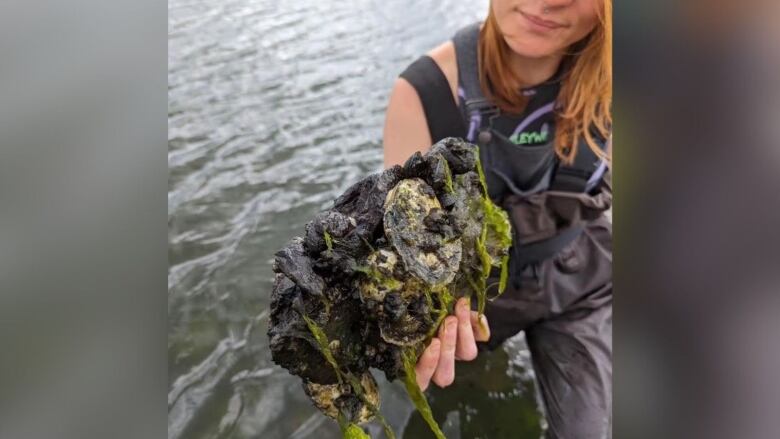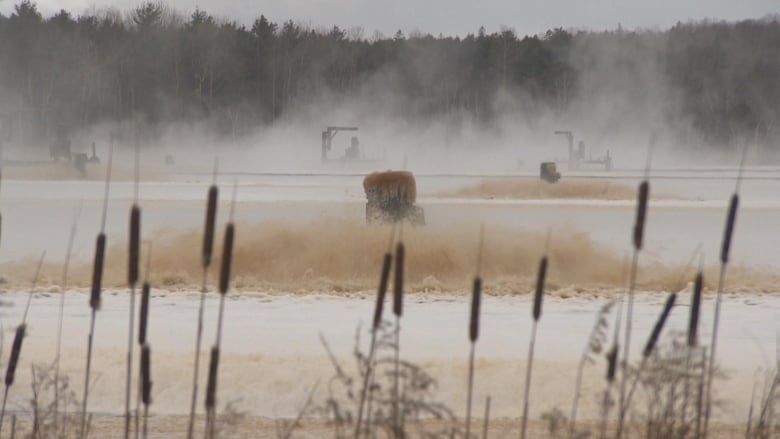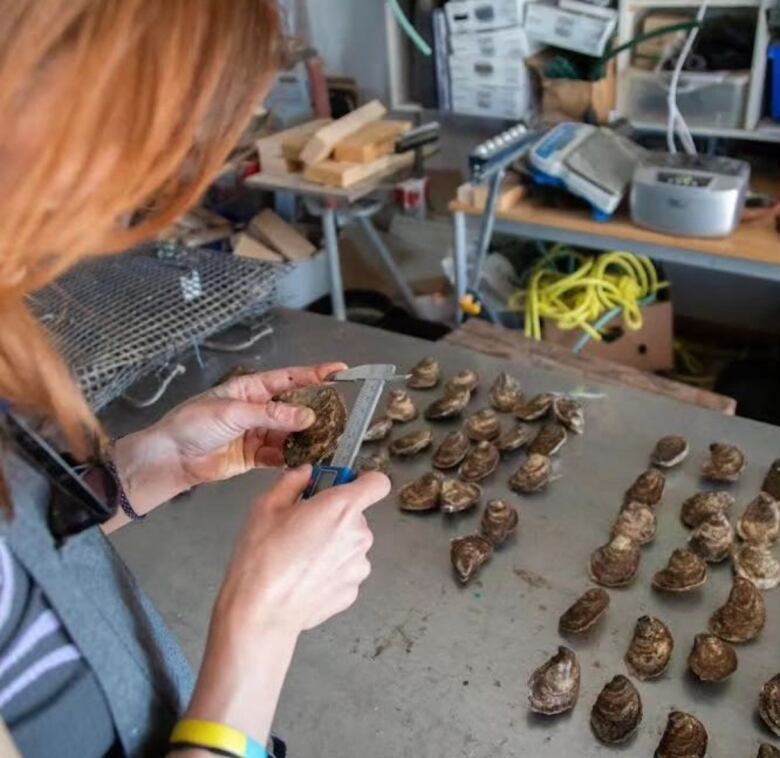Could oysters help clean up Boat Harbour? Pilot project looks to find out
Former pulp and paper mill pumped wastewater into the harbour for decades

A new pilot project is looking to see if oysters can help clean up Boat Harbour.
For decades, the now-shuttered Northern Pulp millpumped wastewater in the body of water near Pictou Landing First Nation in northern Nova Scotia. The facility was shutdown in 2020, but work to remediate the pollution is ongoing.
Ramon Filgueira, a professor at Dalhousie University's Department of Marine Affairs, told CBC's Maritime Noon on Wednesday that oysters can filter five litres of water per hour. He said the Boat Harbour project is starting small, with 225 oysters at work.
"As soon as you scale that up a couple of thousand oysters, you are talking about thousands of litres a day. So they are pretty good,"Filgueira said.
He said he's involved with several projects where oysters are used to filter water, including the Mar Menor lagoon in Spain.

He said if the project is successful, researchers will lookto get funding for more oysters.
"We are going to visit them next week. We visited them a month ago and I can tell you so far they are very happy, growing and filtering,"Filgueira said.
Phillip Docker runs a second-generation, solar-powered oyster farm, ShanDaph Oysters, on Big Island. Oysters from his farm arebeing used for the project.He toldMaritime Noonthat oysters are important for the ecosystem.
"They're incredible filter feeders, so I guess that's the first stage of their helping the environment rebound ... the second stage of that is the development of an ecosystem, an oyster bar or an oyster reef whatever you want to call it. And that's tons and tons of oysters conglomerated together and that just starts the next stage of an ecosystem," Docker said.
Docker saidoyster reefs tend to be incredible breeding grounds for other small organisms and a safe place for other sea creatures.
"Beyond that, there's the waveattenuation. They create a very intricate ecosystem with lots of stoppages and friction points, so when waves lap up against them they protect the foreshore," he said.
Davonia Augustine, a student and intern with Pictou Landing First Nation, toldMaritime Noon Boat Harbour is an important place.

"It was a place where we hunted, we fished and it was just a safe ground where our people or our kids could go when Indian agents would go down to the reserve ...We believe it is sacred, the land of water. We are excited about this project," Augustine said.
Growing up, she said she was told to never drink the tap water or go swimming in the area.
"They would always tell us we would grow extra toes or weird stuff like that if we were to go swimming. We were just told to stay away from the water," Augustine said."It would stink sometimes."
With files from Maritime Noon












_(720p).jpg)


 OFFICIAL HD MUSIC VIDEO.jpg)
.jpg)



























































































